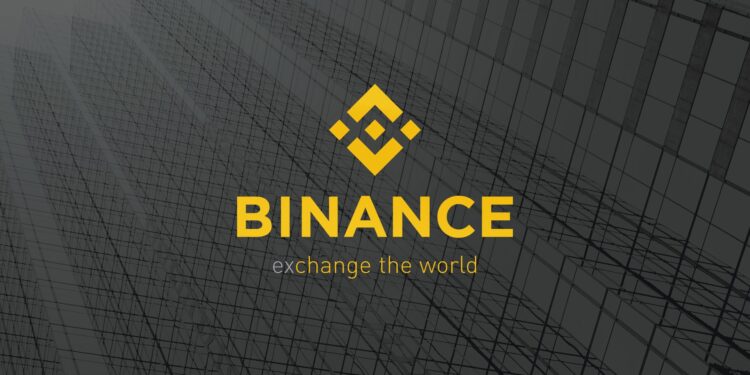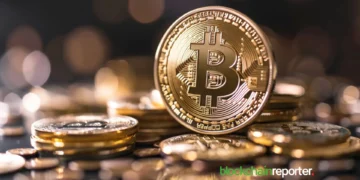The recent arrest of Sam Bankman-Fried, often known as “SBF,” brought to a close an important chapter in the history of the cryptocurrency industry, which is characterized by memes, money, and mayhem. The arrest of the creator of the FTX exchange garnered mainstream headlines that mostly eclipsed the other major cryptocurrency story of the day, which centered on concerns regarding the financial health of Binance, the cryptocurrency exchange that handles the most trading volume overall.
If the failure of FTX was a cataclysmic event for the developing cryptocurrency sector, then the failure of Binance would be an apocalyptic one. According to CryptoCompare, FTX, which at one point was the third-largest cryptocurrency exchange by spot volume, completed over $37 billion in spot trades in the month of October, the month before it crashed.
Coinbase, the second-largest cryptocurrency exchange, handled $47 billion in transactions during that month. In the meantime, the total amount of spot trades conducted on Binance in the month of October was a staggering $390 billion. Over the course of the past month and a half, Binance CEO Chanpeng Zhao (also known as “CZ”), along with other leaders of exchanges, has been on a mission to persuade users that his platform is entirely distinct from FTX – the SBF-led exchange that went bankrupt as a result of mishandling user assets.
Binance, meanwhile, is essentially unregulated in the same way that FTX is, and not everyone is buying CZ’s repeated promises that it is acting in an ethical manner. In the past week, users have been sufficiently disturbed by a sloppy audit of the exchange’s reserves, which was followed by the revelation that criminal investigations are being conducted against executives at Binance. This has led to record withdrawals from the platform.
Recent occurrences have brought to light the fact that Binance, which functions beyond the purview of regulators and tracks user holdings on its own servers as opposed to public blockchains, requires a great deal of user confidence in order to thrive. In the realm of cryptocurrencies, where there is no such thing as trust, this is a bit difficult to square. In this article, we will delve deeper into this issue by providing facts and data, in addition to an important viewpoint on the matter from B (Da Viking), a core contributor at Floki.
1. The Widespread Mazars FUD
Mazars just discontinued their auditing of all cryptocurrency exchanges, not only Binance. Crypto.com, Kucoin, and Binance were all subjected to auditing by Mazars. They terminated their audits of each and every one of these exchanges. That is an issue with Mazars, and any attempts to make it appear as though it is an issue with Binance reek of despair.
It is logical that Mazars would have believed that doing crypto audits was too risky for them at this time, therefore their decision to discontinue doing them would have been reasonable. Since the collapse of FTX, organizations that deal in TradeFi have been more skeptical about cryptocurrency. For instance, financial institutions have begun closing the accounts of cryptocurrency users.
If auditing businesses choose not to engage with cryptocurrency companies, this does not indicate that the cryptocurrency companies are bankrupt, just as the refusal of banks to work with cryptocurrency customers does not indicate anything. It is rash and irresponsible to assert that Binance is bankrupt on the basis of Mazars, especially in light of the second argument below.
2. Claims of Binance’s Insolvency
According to the data found on the chain, Binance currently has more than $55 billion in its reserves. This is a verifiable fact as it can be verified via the blockchain. Claims that there has been a “bank run” on Binance when only a fraction of this amount has been withdrawn are, to put it mildly, absurd.
The Global Blockchain Lead at Ernst & Young, one of the Big Four accounting firms, asked a colleague to check the initial Binance Proof of Reserves, and the colleague found that the numbers add up. The unofficial statement made by Paul Brody is not, of course, the same thing as an official audit.
Having said that, given that he is the Global Blockchain Lead at one of the Big Four accounting firms, we can safely conclude that Paul Brody is much more knowledgeable about this topic than the social media trolls who have almost no idea what they are talking about.
It is also important to note that prominent thinking and data leaders in the cryptocurrency industry, such as Coindesk, CryptoQuant, and Nansen, have vouched for Binance’s on-chain reserves. Some evidence of Binance’s reserves are based on the on-chain data.
According to on-chain data compiled by CryptoQuant, Binance has handled withdrawal requests totaling more than $14 billion in just this single week. Although over half of these withdrawals took place in a single day (December 13), the company still has more than $55 billion in its reserves.
That doesn’t appear anything at all like a run on the bank or an insolvent exchange. The exact opposite is true. In contrast, FTX had very little in their reserves and was frantically trying to collect funds from a variety of sources so that they could send it to their wallets so that they could satisfy withdrawal requests from users.
Binance is not the FTX exchange and it is absolutely absurd to compare Binance to FTX. According to the explanation provided in this tweet by @ki young ju, on-chain data demonstrates the distinction between FTX and Binance:
3. The FTT FUD About CZ’s CNBC Interview
Critics of CZ’s statement on the latest CNBC interview either do not comprehend what he said or are purposefully twisting his response in order to support their own positions. They do not appear to understand how the crypto process works either. The statement given by CZ on the sum of $2.1 billion refers to the funds that Binance received for their FTX share.
It is not related to the user’s funds, and it does not suggest that there is a problem with withdrawals. We now know according to CZ’s tweet that Binance received both BUSD and FTT in exchange for its holding in FTX:
Therefore, even if there were to be a reimbursement of these funds, it most likely won’t be up to $2.1 billion because it won’t be up to that amount. Since Binance was allocated both BUSD and FTT, and all evidence points to the fact that they did not liquidate their FTT, the amount that would be clawed back should be far less than $2.1 billion as a result of the drop in the price of FTT.
The true question is, therefore, how much compensation in BUSD and FTT did Binance receive. In light of this information, the statement that CZ offered on CNBC, which was that their lawyers will deal with it if someone comes demanding for the $2.1 billion that FTX gave them, is completely logical and in no way misleading.
4. The Truth About BUSD
Last but not least, there is a mistaken assumption that Binance has a reserves problem due to the fact that it holds a lot of BUSD. Binance is not the entity that issues BUSD. BUSD is a digital currency that is created and distributed by Paxos, has the support of the U.S. Dollar and Treasury Bills, and is authorized and supervised by the New York State Department of Financial Services (DFS).
On the website of the New York State Government, it is very simple to get information on the fact that the BUSD is regulated by the DFS. To put it another way, the US government regulates BUSD, making it significantly more secure than USDT (which has been FUDed for years now and is still yet to collapse).
Final Thoughts
As can be seen from the evidence presented in this article and the information shared by B (Da Viking), attempts to spread fear, uncertainty, and doubt about Binance are either uninformed, demonstrate a clear lack of understanding, or are purposefully designed to stir panic and enmity of Binance based on claims that are not supported by evidence.
They are, to put it plainly, attacks on the overall cryptocurrency industry. In addition, we would like to add that this article is not an endorsement of Binance; rather, it is an objective look at the situation based on facts and data that anyone can find. Finally, we would like our readers to do their own research before making any financial decisions.






















